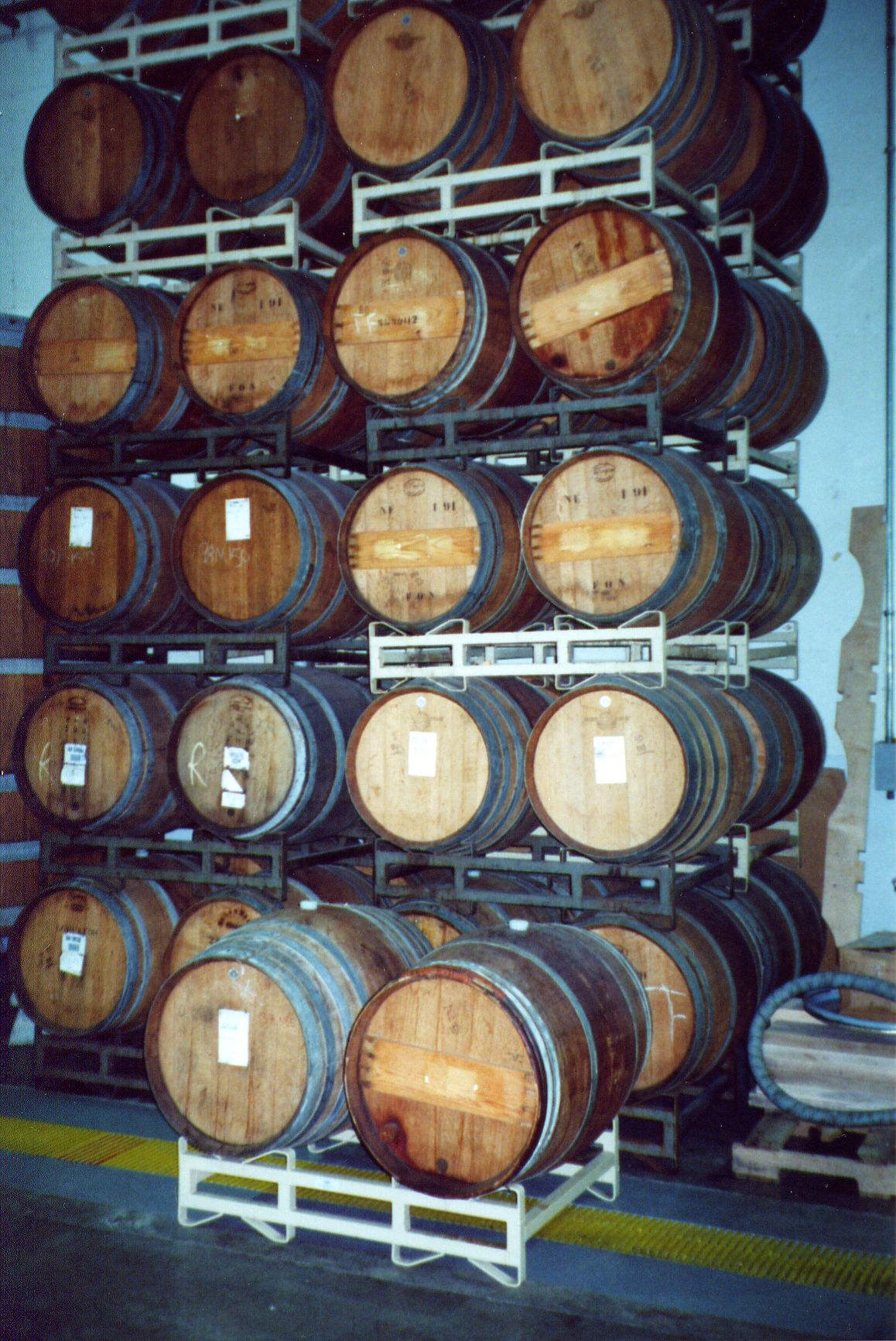Walking into the brewery at the Glacier Brewhouse in Anchorage, AK, you might think you were in a wine cellar instead. There in one alcove is head brewer Kevin Burton’s “wall of wood”—an impressive row of about 50 oak barrels, all filled with beer. “Everything goes in the barrel,” Burton says, especially his stout, porter, Scotch ale, bock and barley wines. “It’s a lot of work, but it gives you more options with a batch of beer,” he claims.
With their heavy char and the vanillin flavors of American oak, as well as the maple accents and corn-based sweetness of bourbon whisky, bourbon barrels can add additional depth of flavor to many dark beers.

The barrel cellar at New Belgium Brewing Co. (Alan Moen)
But why does Burton put his beer into oak barrels? “Well, beer used to be put in them,” he says. “But I really got the idea from wine and spirits—the flavors they get from wood can work in beer, too. And besides,” Burton adds, “it’s a lot more fun than stainless steel!”
It’s true that in the wine business, small oak cooperage is the norm: winemakers age wines, particularly reds, in 50 to 60 gallon oak barrels to improve their flavors. While some of this barrel-aging tradition is as much mystique as method, it’s undeniable that this technique has worked well for centuries.
The same method is used for spirits, particularly whiskey. All bourbon and Scotch is aged in oak barrels, usually made of American oak. Some brands are well known for using barrels that previously held wine, such as The Macallan, whose whisky is matured in sherry barrels, giving it a unique brandy-like taste.
But the question inevitably arises: since beer is so susceptible to bacterial infection, and sanitation is a fundamental part of any brewer’s craft, why put beer into vessels that can’t be sanitized? Why are brewers like Burton returning to old techniques that practically beg for problems?
The answer is that those “problems,” in the hands of a creative brewer, can also be the source of a complex range of beer flavors—startling flavors that are winning over American beer drinkers.
Unlike stainless steel, wood is naturally porous. Just as the slow evaporation and oxidation of wine in barrels can give it more concentration and body, the same can occur in barrel-aged beer. And for those who like sourness or “horse blanket” aromas and tastes in beer, wood is also the perfect medium for bacteria to flourish. The challenge for a brewer is to manage these processes to add a new dimension to their beers.









